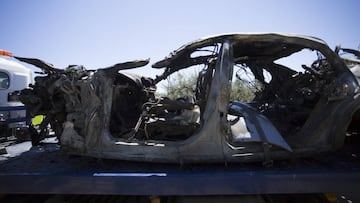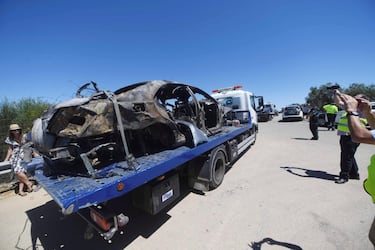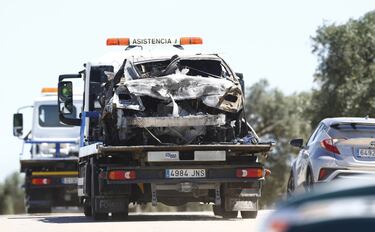Reyes' accident reconstructed: his average speed - 152.8 km/hour
El Mundo reconstructed Reyes' fatal car accident, retracing the journey he made from Extremadura to Utreta in a hired car.

Spanish newspaper El Mundo has performed a reconstruction of the fatal car accident which claimed the lives of José Antonio Reyes and his cousin at the start of this month. Reyes left Extremadura UD's training ground at 10:30 hours on the morning of Saturday 1 June because he wasn't in the squad list for the next day's game against Cádiz. Joining him for the journey home to Utrera where he wanted to give his wife a surprise were two of his cousins: Juan Manuel Calderón and Jonathan Reyes. The footballer was keen to get home as quickly as possible so that they would be in time for lunch.



According to the journalists who performed the reconstruction, Reyes started out on the BA-012 minor road and 1.3 kilometres into his journey, came onto the EX-359 B road, where the speed limit is 60 km/h. Later, he switched to the A-66 motoway, known as the Silver Highway. From the speed camera situated at the turnoff for Almendralejo to the next one, there is a distance of 138.1 kilometres. To complete the journey in the time it took Reyes, you would have to be travelling at 220 km/hour at the very least.
Numerous speeding offences
El Mundo explain that the speed limit for entering the SE-30 are between 60 and 80 km/h. Reyes respected those limits due to the six speed cameras located in the area as he had received at least 12 speeding tickets in Spain since passing his driving test. It's a straight, easy run without any blackspots. However according to Mundo Deportivo, Reyes must have been driving at 237 km/hour when he lost control of the car.
Related stories
At 11:45, kilometre 17.8 on the A-376, Reyes' Brabus Mercedes S550 hit the curb and veered off the motoway, hitting a fence which catapulted the vehicle into the air for 30-35 metres. On hitting the ground, Reyes' car rolled over several times, losing several parts on the chasis until at came to a halt at a small bridge where it burst into flames. Juan Manuel, the only survivor of the accident, told the Civil Guard: "I don't know what José did... I can't remember. The car went flying through the air..."
The conclusion of El Mundo's reconstruction of the accident is that Reyes' average speed must have been 152.8 km/h. From the training ground to the accident scene, Reyes' car had completed 191.2 kilometres - from start to finish, one hour and 15 minutes. For the journalists who recreated the same journey and adhered to the highway code, it took one hour 56 minutes and 44 seconds. While Reyes' average speed was 152.8 km/h, the average speed of the reconstruction was 98.2 km/h - that means the player must have been travelling in excess of 220 km/h on the A-66.